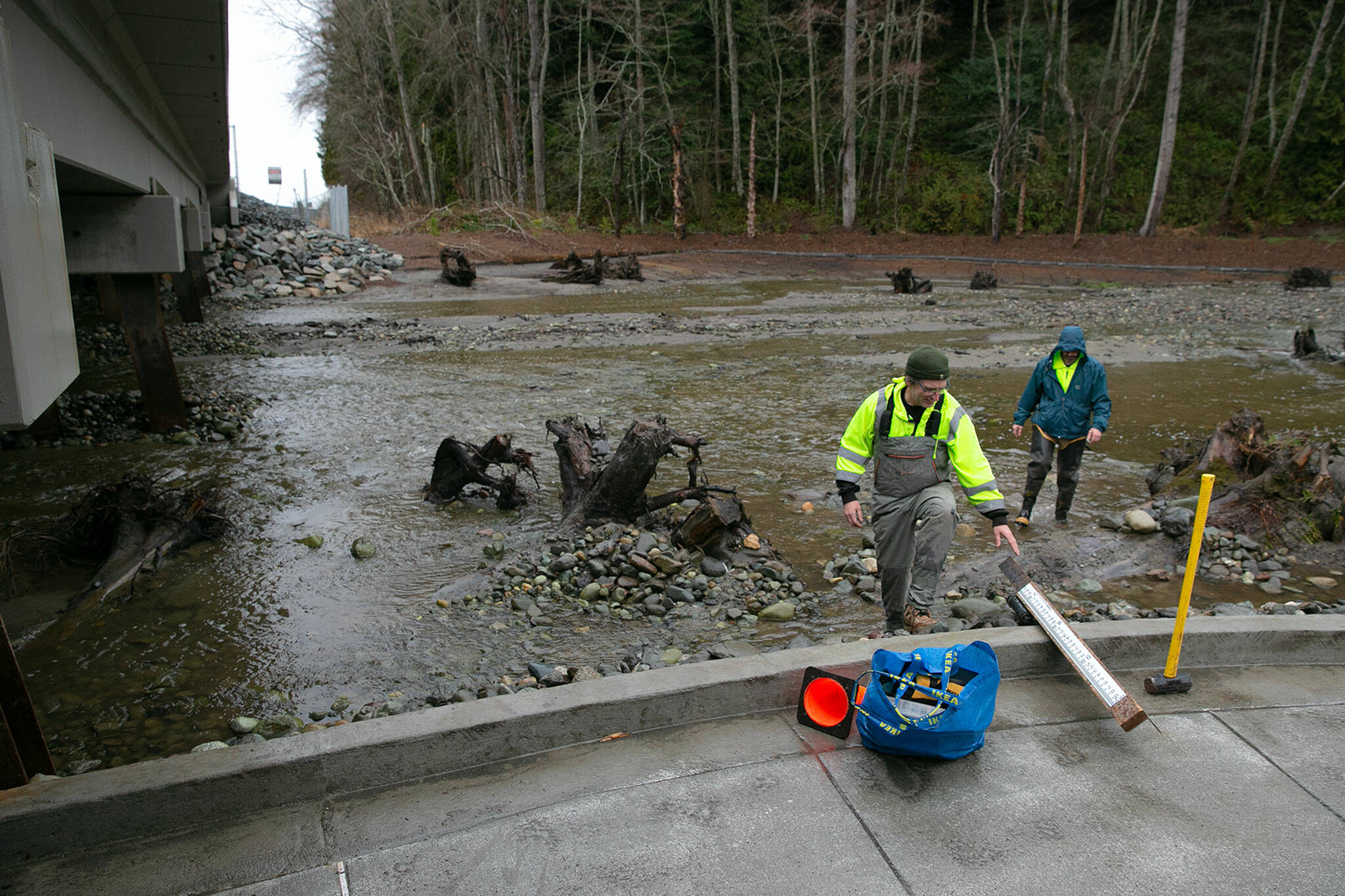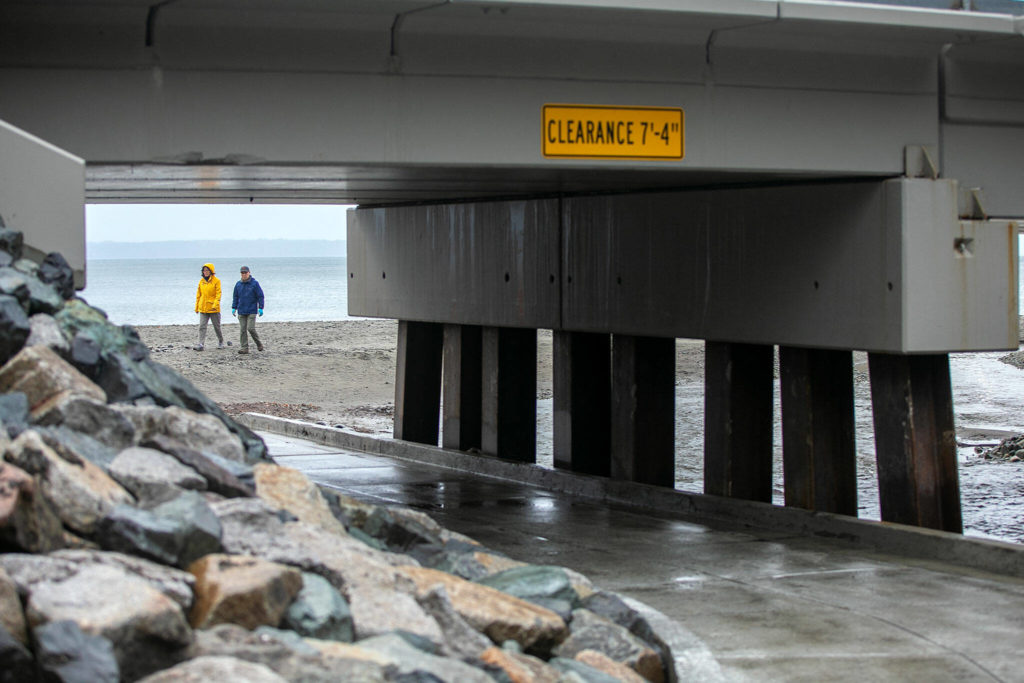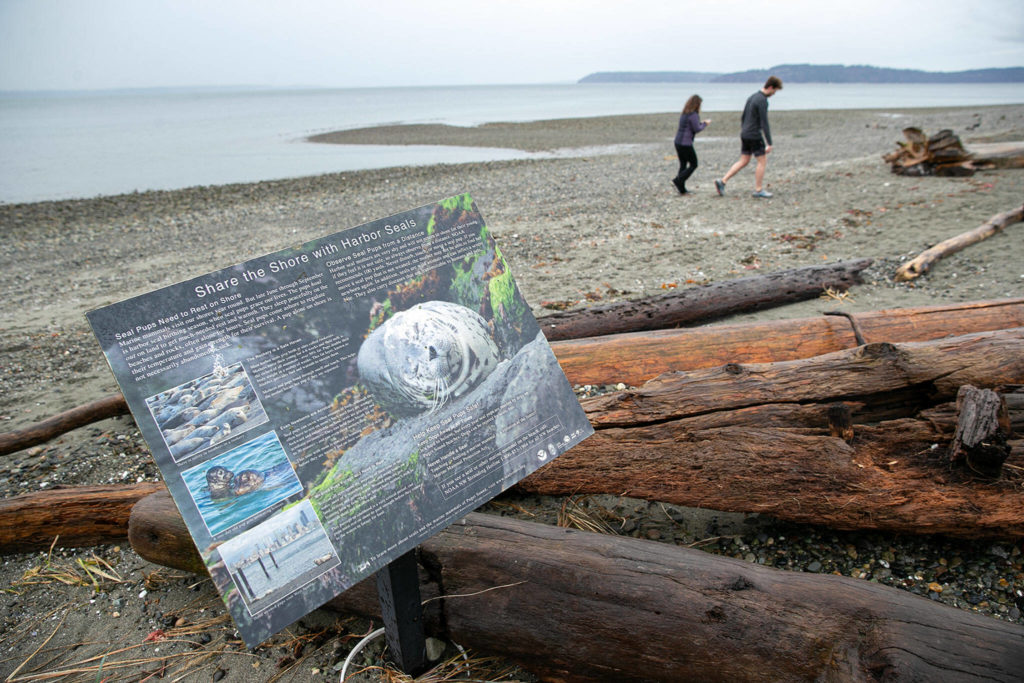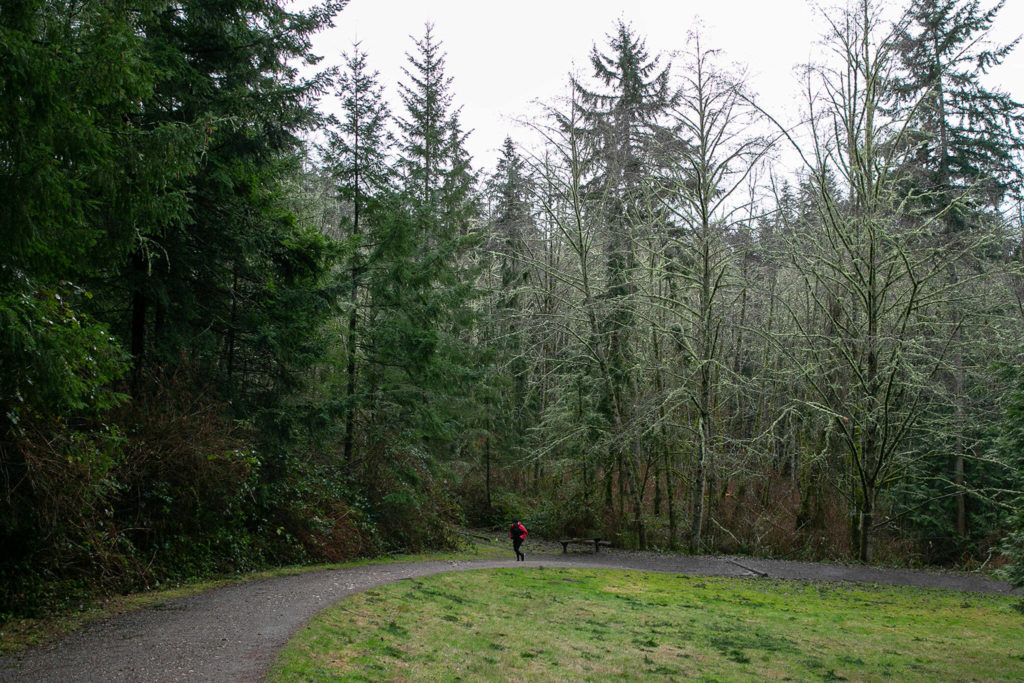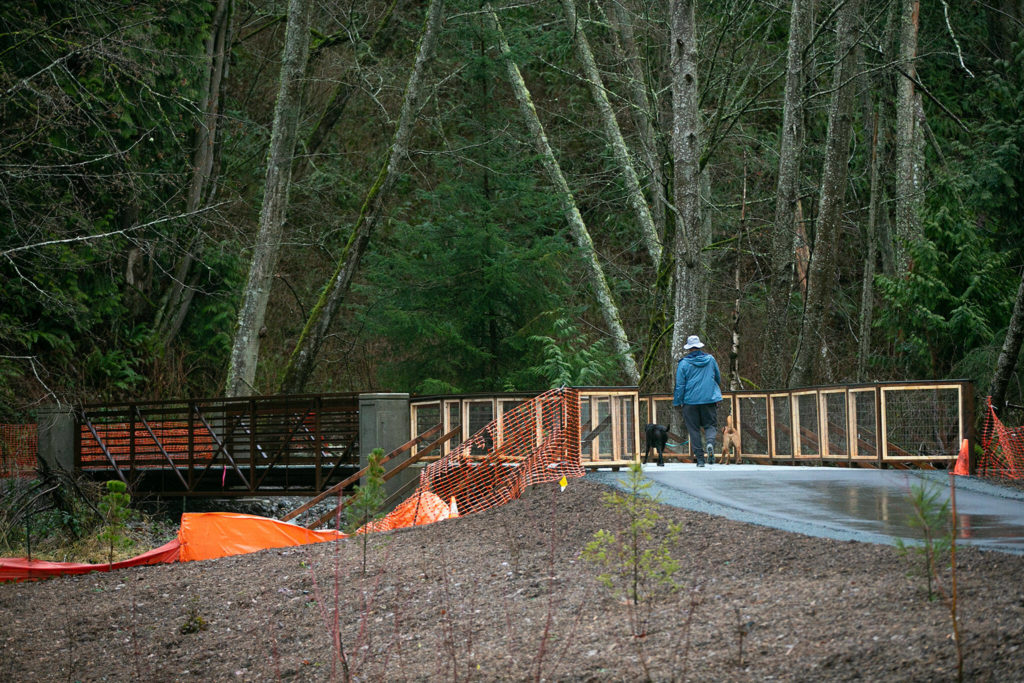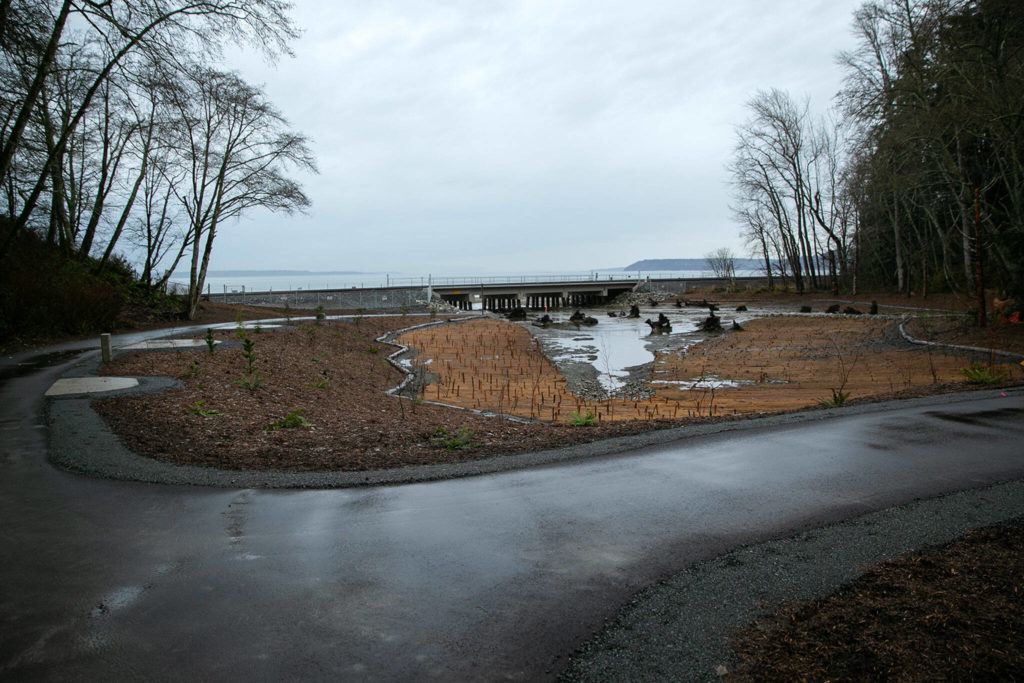EDMONDS — After nearly two decades of planning and two years of intermittent closures for renovations, Meadowdale Beach in Edmonds is back open. The park’s coastline provides key habitat for salmon recovery, but project managers say human visitors will find plenty of updates to enjoy, too.
The park, located 7 miles north of downtown Edmonds, is a swath of lush green forest surrounded by the bustle of traffic and neighborhoods. To get to the beach itself, you’ll have to park at the top and hike about a mile down to the water. But most visitors find the trek is worth it once they reach the shore, said Rob Marchand, a senior park planner with Snohomish County Parks and Recreation.
In the last stretch of your stroll, though, you’ll find a narrow concrete tunnel is the last obstacle before the beach. It’s the only way to safely bypass the BNSF train tracks running parallel to the coastline, but after heavy rains, it’s prone to flooding, sometimes enough to submerge the entire park waterfront. To avoid the waterlogged crossing, visitors would sometimes scramble over the tracks instead, Marchand said.
The Chinook salmon that visit the park each year faced a similar bottleneck. Lunds Gulch Creek flows through the park and into Puget Sound, and the estuary where the two meet provides crucial habitat for young salmon making their way to the ocean, said Elisa Dawson, a county surface water management planner. Before making the final leap into the Pacific, the fish will spend time in the brackish estuary growing, feeding and preparing for the transition to saltwater.
But the creek was being forced to pass through a culvert only 6 feet wide below the tunnel to the beach, Dawson said. The tight squeeze made it difficult for small fish to swim upstream and caused sediment to build up in the estuary when it flooded, threatening the rich habitat.
Marchand said Snohomish County, along with the Tulalip Tribes, BNSF and state and federal agencies, had been collaborating for about 18 years to implement solutions for both problems. He said the sheer scope of the renovations and the associated costs, currently projected at $16.7 million, meant it took a while to come together. But by May 2021, the team was finally ready to start work.
The county closed off beach access with the goal of widening the stream, restoring the estuary and replacing the narrow tunnel crossing by the end of summer. The project hit a snag when BNSF pulled its resources in favor of helping to quell wildfires in California, putting much of the infrastructure work on hold, Marchand said. The beach was opened back up while teams waited for the next chance to finish what they’d started.
Work began once more in early summer 2022 with the hope of finishing up by fall, but the project went on pause again while BNSF addressed wildfires. By the new year, Meadowdale Beach was finally ready for its big debut.
When the waterfront officially reopened to the public on Jan. 7, visitors no longer had to sidle through the claustrophobic tunnel. The project removed 120 feet of railway and rerouted it onto two bridges, under which pedestrian walkways provide much easier access to the shore. With the culvert gone, the mouth of the creek was widened and restored to something more closely matching its natural state, Dawson said.
On the beach, crews removed sediment buildup to restore the estuary’s natural flow. A small footbridge over the creek will give beachgoers a peek at the little salmon that will make their way down the stream later in the year. Dawson said project managers will monitor the estuary carefully for the next 10 years, gauging the project’s success in growing fish populations.
Dawson said she hopes Meadowdale will be a “pilot project” for other estuary restorations around Puget Sound in the coming years. She said there used to be dozens of these estuaries providing needed salmon habitat up and down the coast, but most are now inaccessible to the fish. By going beyond minor improvements to completely restore the estuary, the beach can serve as an example for countless other projects, Dawson said.
With work complete on the estuary, Dawson said scientists will monitor the habitat for the next 10 years to study its impact on salmon populations and inform future restoration work. Planners also designed the beach with longevity in mind, making it adaptable to the higher salinity and rising sea levels that will come with climate change in generations to come.
Marchand said crews still need to wrap up some work on the rail bridges, so beach access will close again briefly in early February.
Park managers took advantage of the ongoing construction to make improvements elsewhere in the park too, Marchand said. The decades-old public restrooms, choked with sand from years of flooding, were demolished and replaced with updated facilities in a new location, and a new picnic shelter will be installed soon. A small part of the park is still fenced off as the last pieces fall into place, but the work is projected to wrap by August, Marchand said.
Riley Haun: 425-339-3192; riley.haun@heraldnet.com; Twitter: @RHaunID.
Talk to us
> Give us your news tips.
> Send us a letter to the editor.
> More Herald contact information.
